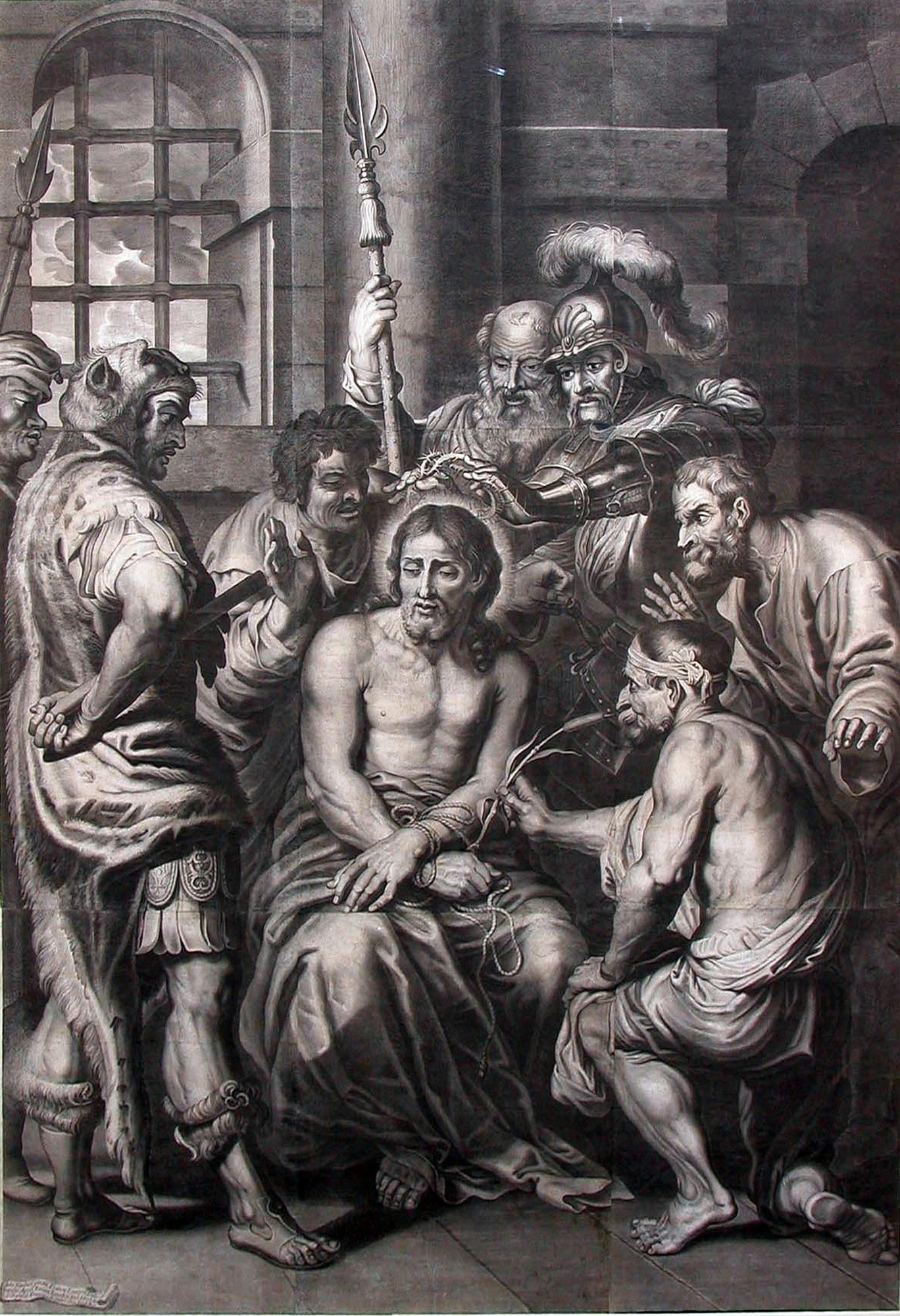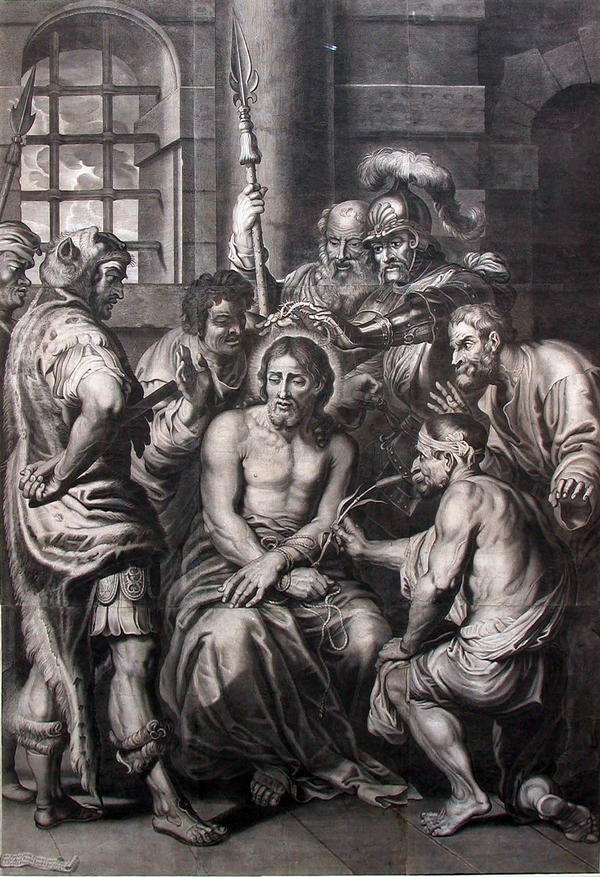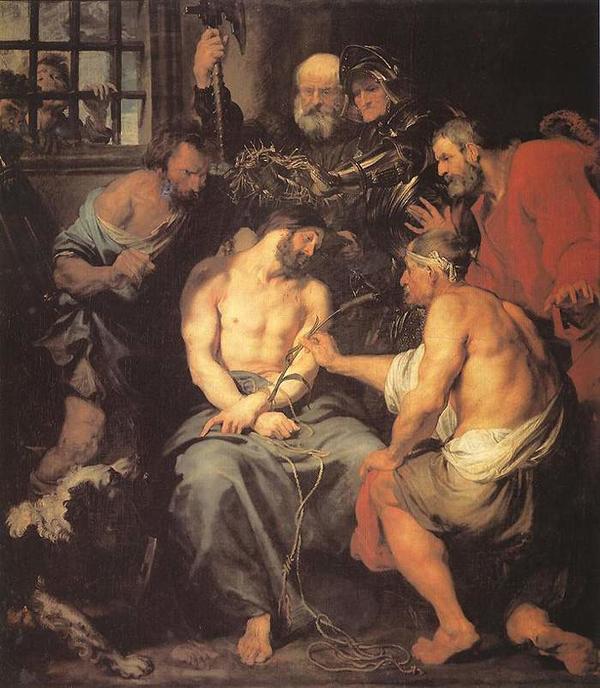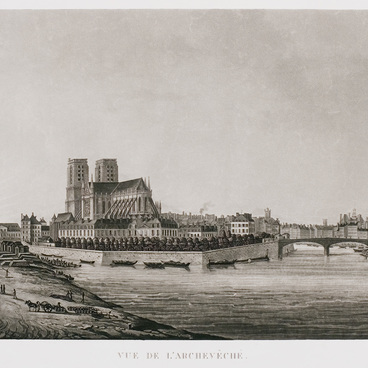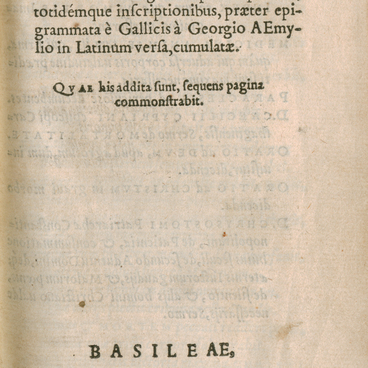Little is known about French draftsman and engraver François Langot. He lived in Paris, studied under Pierre Landry, a member of Paris Academy of Arts, and worked at his workshop. Langot created detailed large-scale engravings of famous paintings and sold them to customers as altarpieces. The graphic interpretation of Anthony van Dyck’s “Crist Crowned with Thorns” was commissioned to him by Landry himself.
The Mocking of Christ. Crowning with Thorns
Creation period
1660–1670
Dimensions
216,5x151,5 cm
216.5x151.5 cm
216.5x151.5 cm
Technique
paper, etching, burin, from nine plates
Collection
10
Open in app#4
François Langot
The Mocking of Christ. Crowning with Thorns
#3
#6
Anthony van Dyck “Crist Crowned with Thorns”, 1618–1620, oil on canvas. img via: wikipedia.org
The idea of painting the crowning with thorns was conceived by van Dyck in 1618-1620, while he and Rubens were completing the painting of the ceiling in the Jesuit church in Antwerp. “Christ Crowned with Thorns” became one of the first large paintings made by young van Dyck alone. It features a scene from the Passion of Christ, where Crist is mockingly crowned with thorns.
#10
Late in the morning on Good Friday, after the flagellation, soldiers brought Christ sentenced to death to the square by Jerusalem Palace walls. They threw a red legionnaire cloak as a royal mantle over him, put a crown of thorns on his head, and gave him a tree branch instead of a scepter. Then they led the tormented Christ to Calvary.
#7
The original painting has not survived, but it was reconstructed from reproductions. During his work on the engraving, Langot made a material change to the composition. In van Dyck painting, Jesus is portrayed with his head limply inclined towards his left shoulder, only his profile is visible. Without changing the pose of the sitting Christ, François Langot turned him to look out at viewers and added a halo around his head. This detail provided a new emphasis to the story. While all characters are equally important to van Dyck in his “Christ Crowned with Thorns”, in “The Mocking of Christ”, Langot brings Jesus to the forefront — he looks estranged from pain, humiliation and other characters’ emotions. Langot surrounded Christ with seven tormentors instead of five, excluded the two onlookers behind the pretorium grid and the barking dog.
Langot’s “The Mocking of Christ” is an etching made on nine metal plates using a burin. It is one of the largest engravings in the world. There are three known prints of it. One of them is in Irbit Museum of Fine Arts, another one in Caceres Art Museum, Spain, and the third one in a private collection at Nin-Hof estate in Germany.
Langot’s “The Mocking of Christ” is an etching made on nine metal plates using a burin. It is one of the largest engravings in the world. There are three known prints of it. One of them is in Irbit Museum of Fine Arts, another one in Caceres Art Museum, Spain, and the third one in a private collection at Nin-Hof estate in Germany.
#11
Irbit State Museum of Fine Arts (SMFA)
read morehide
00:00
00:00
1x
The Mocking of Christ. Crowning with Thorns
Creation period
1660–1670
Dimensions
216,5x151,5 cm
216.5x151.5 cm
216.5x151.5 cm
Technique
paper, etching, burin, from nine plates
Collection
10
Open in app
Share
